If you’re a vegan looking for a business idea that aligns with your diet, you’ve got more options than you might think. You could start abakery, ...
You might consider targeting a niche, such as pies or cookies by the dozen.
We earn commissions if you shop through the links below. Read more
Written by: Carolyn Young
Carolyn Young is a business writer who focuses on entrepreneurial concepts and the business formation. She has over 25 years of experience in business roles, and has authored several entrepreneurship textbooks.
Edited by: David Lepeska
David has been writing and learning about business, finance and globalization for a quarter-century, starting with a small New York consulting firm in the 1990s.
Published on April 13, 2023
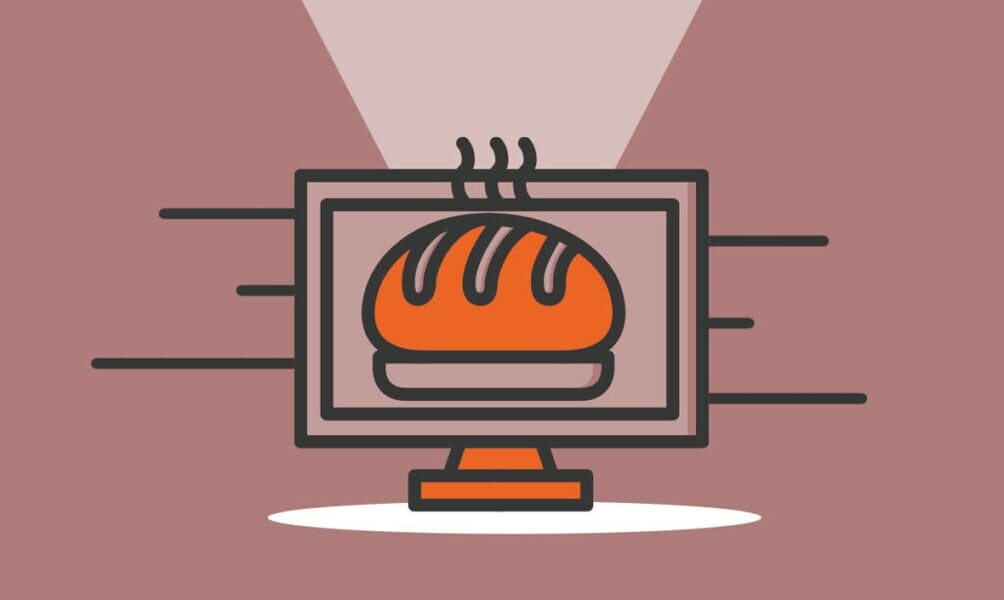
Investment range
$4,900 - $12,000
Revenue potential
$30,000 - $300,000 p.a.
Time to build
0-3 months
Profit potential
$21,000 - $120,000 p.a.
Industry trend
Growing
Commitment
Flexible
Important elements to think about when starting your online bakery:
You May Also Wonder:
Is an online bakery profitable?
An online bakery can be profitable if you can get a lot of traffic to your website. If you’re baking in your home kitchen, however, you may be limited in how much you can produce.
What is the growth potential of an online bakery?
There’s really no limit to how large an online bakery can grow. You’ll just need to get a large commercial space to do your baking at some point, and hire a large staff.
Can you start an online bakery on the side?
You can easily start an online bakery as a side hustle, but you’re unlikely to make much money with limited time.
How much does it cost to start an online bakery?
The costs to start an online bakery depend on how much equipment you need to purchase and how much space you have. You can rent a commercial kitchen space to do your baking instead of buying equipment to lower your upfront costs.
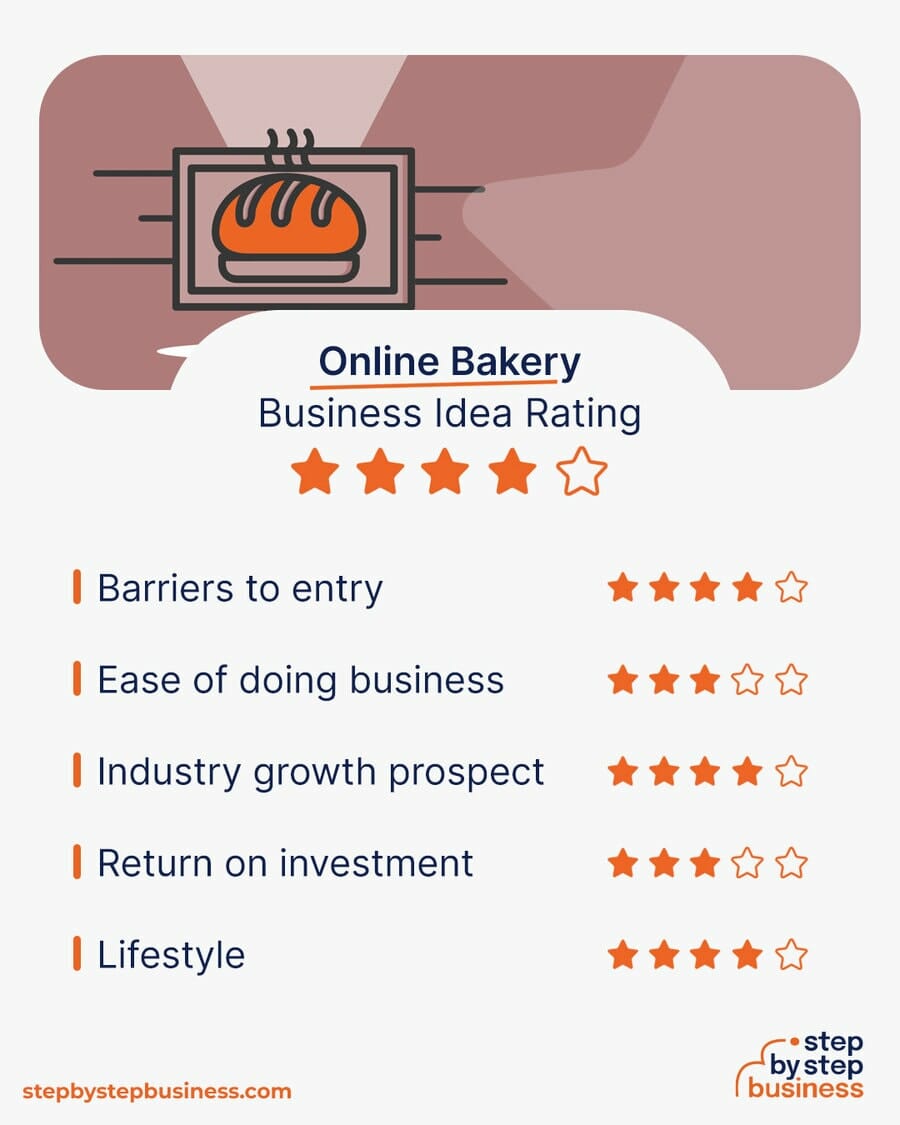

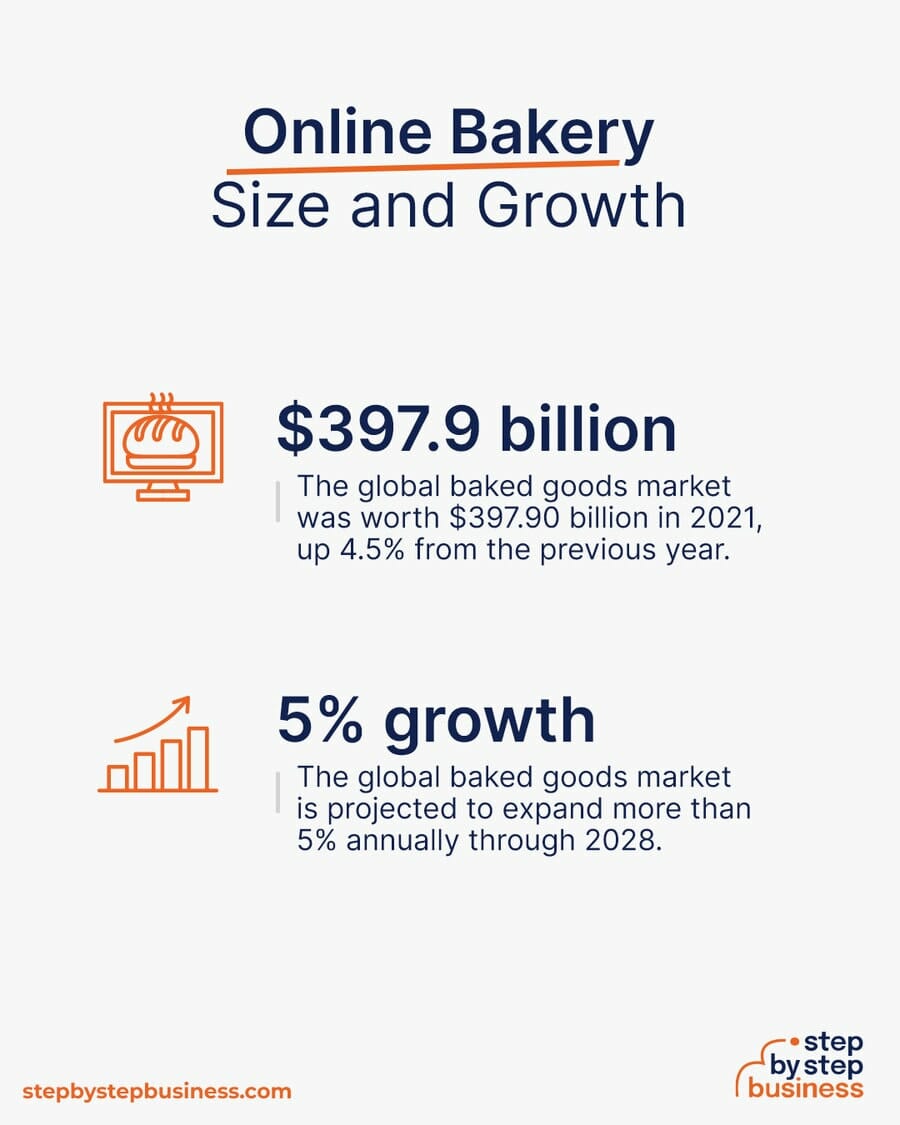
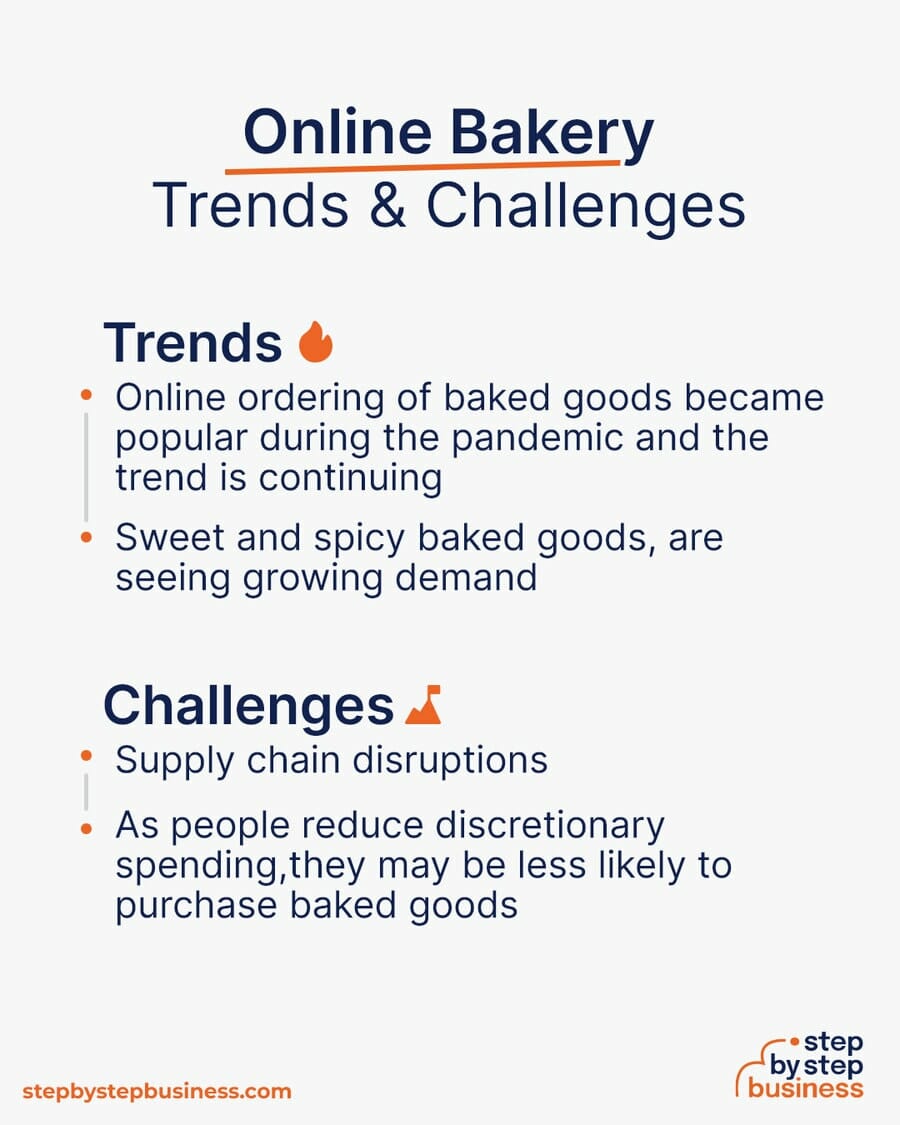
Trends
Challenges
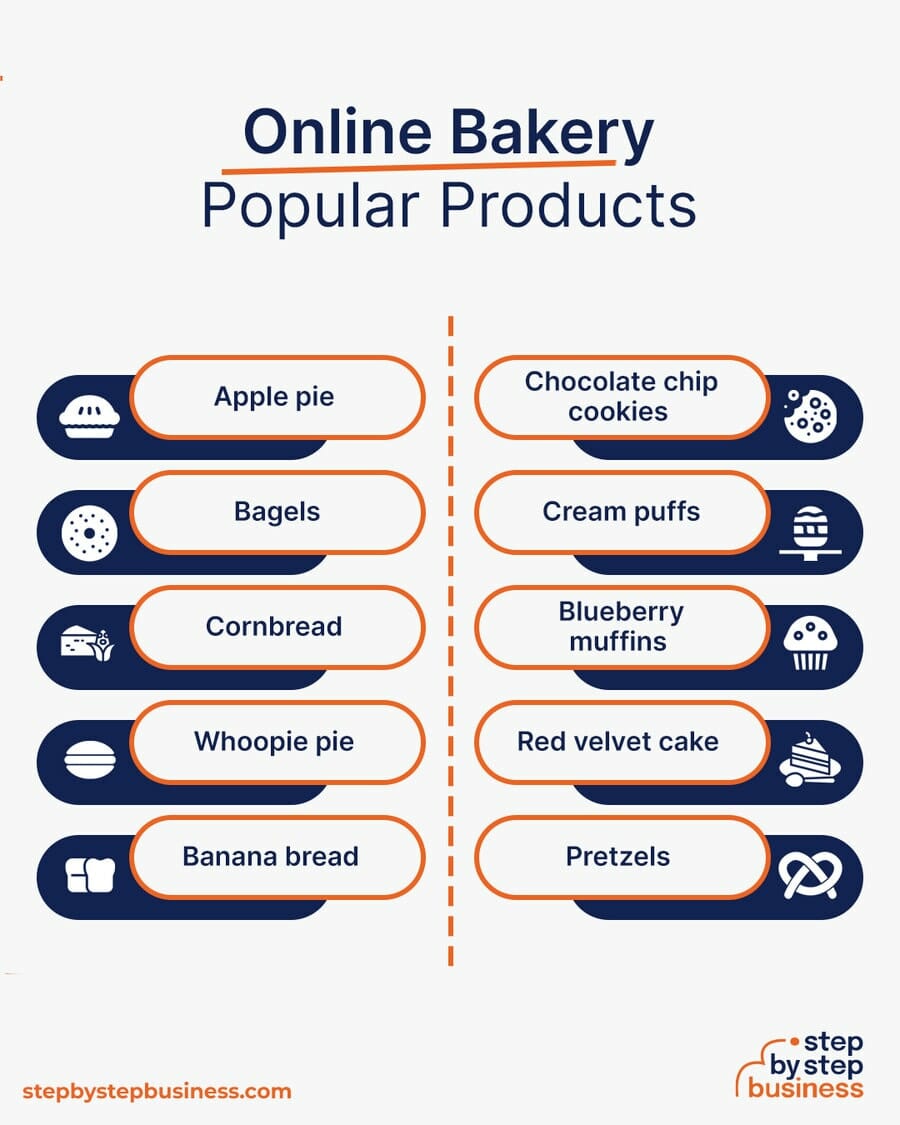
The 10 most popular baked goods in the US are:((https://recipes.howstuffworks.com/food-facts/10-favorite-baked-goods.htm))
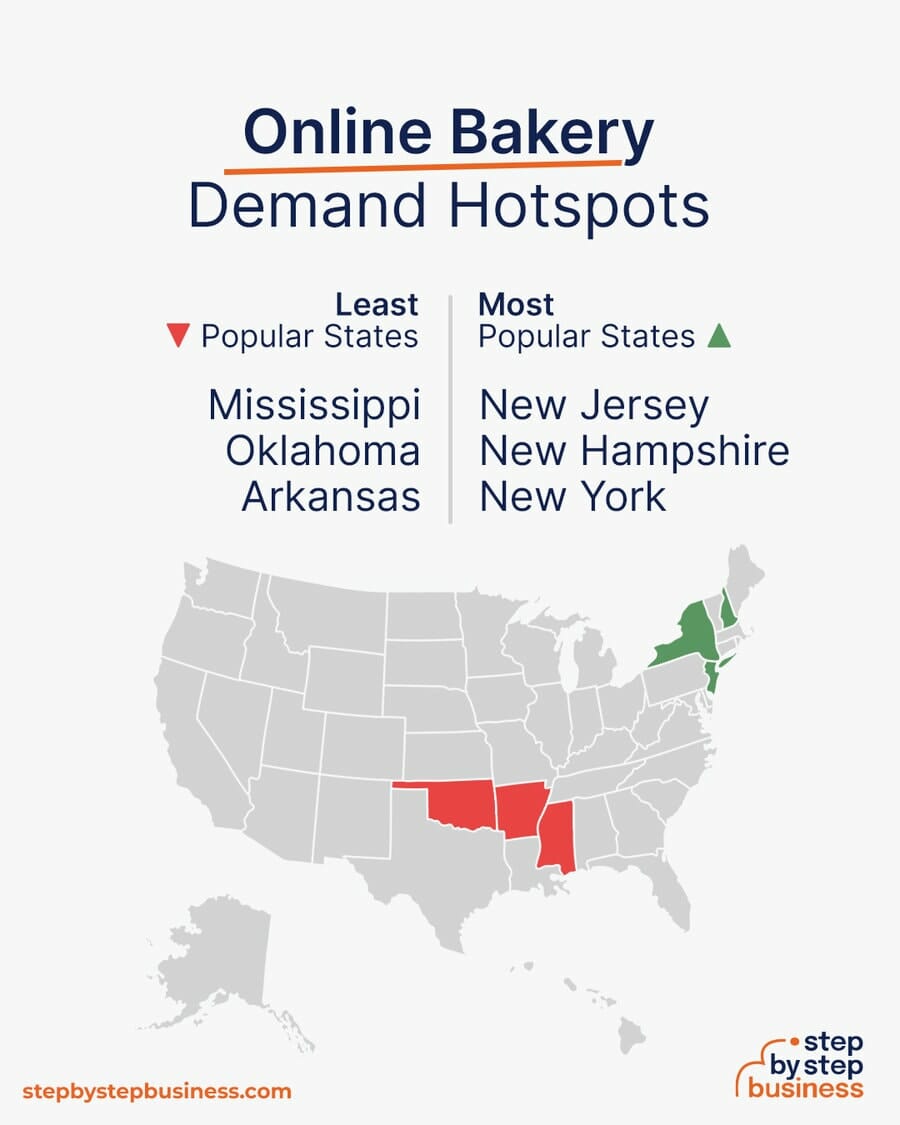
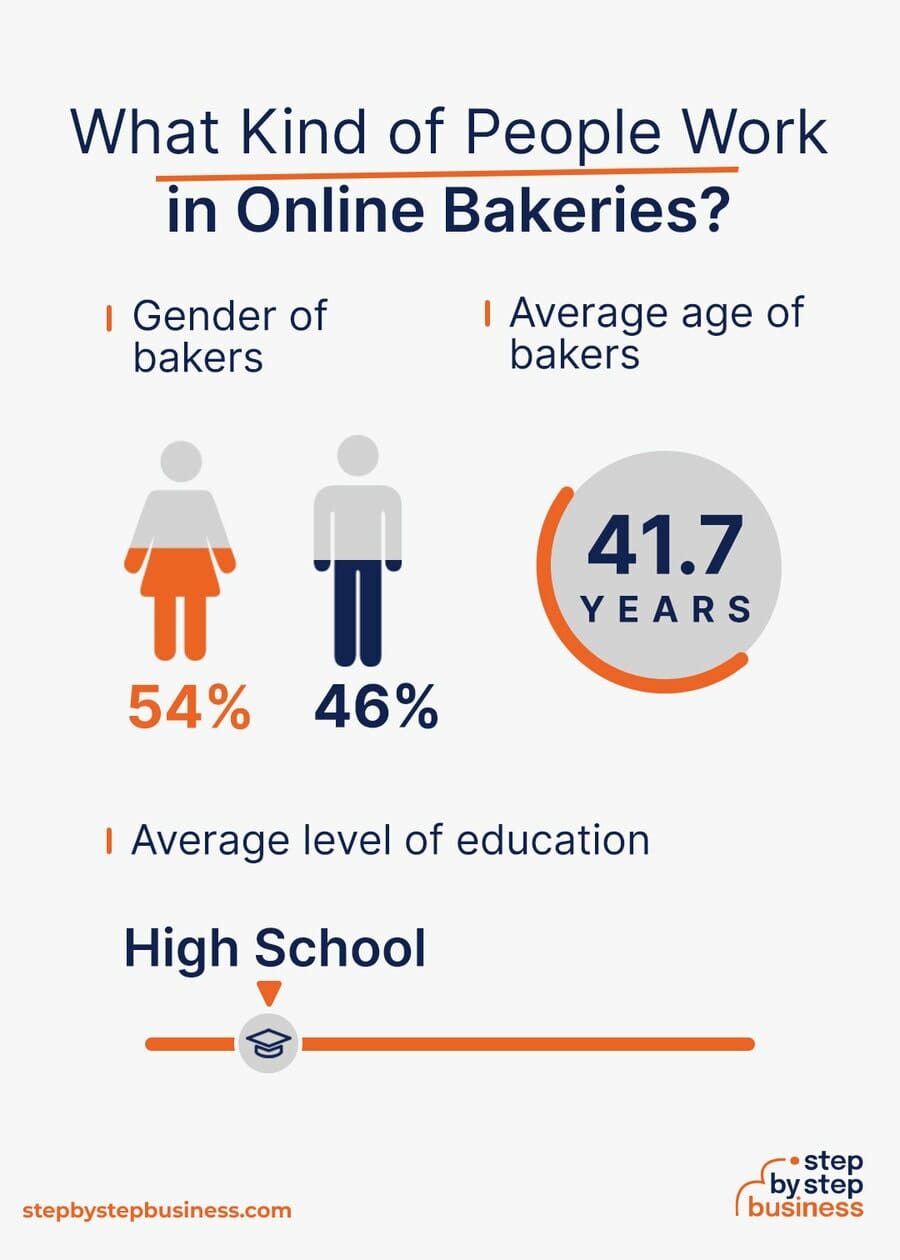
Startup costs for an online bakery range from $5,000 to $12,000. Costs include equipment, ingredients, and packaging supplies.
You’ll need a handful of items to successfully launch your online bakery business, including:
If your kitchen is not large enough for significant production, you could rent a commercial kitchen space part-time.
| Start-up Costs | Ballpark Range | Average |
|---|---|---|
| Setting up a business name and corporation | $100 - $500 | $300 |
| Business licenses and permits | $200 - $500 | $350 |
| Insurance | $100-$500 | $300 |
| Website | $200 - $1,000 | $600 |
| Initial Marketing Budget | $300 - $500 | $400 |
| Equipment | $2,500 - $5,000 | $3,750 |
| Initial Ingredients Supply | $1,000 - $3,000 | $2,000 |
| Packaging supplies | $500 - $1,000 | $750 |
| Total | $4,900 - $12,000 | $8,450 |
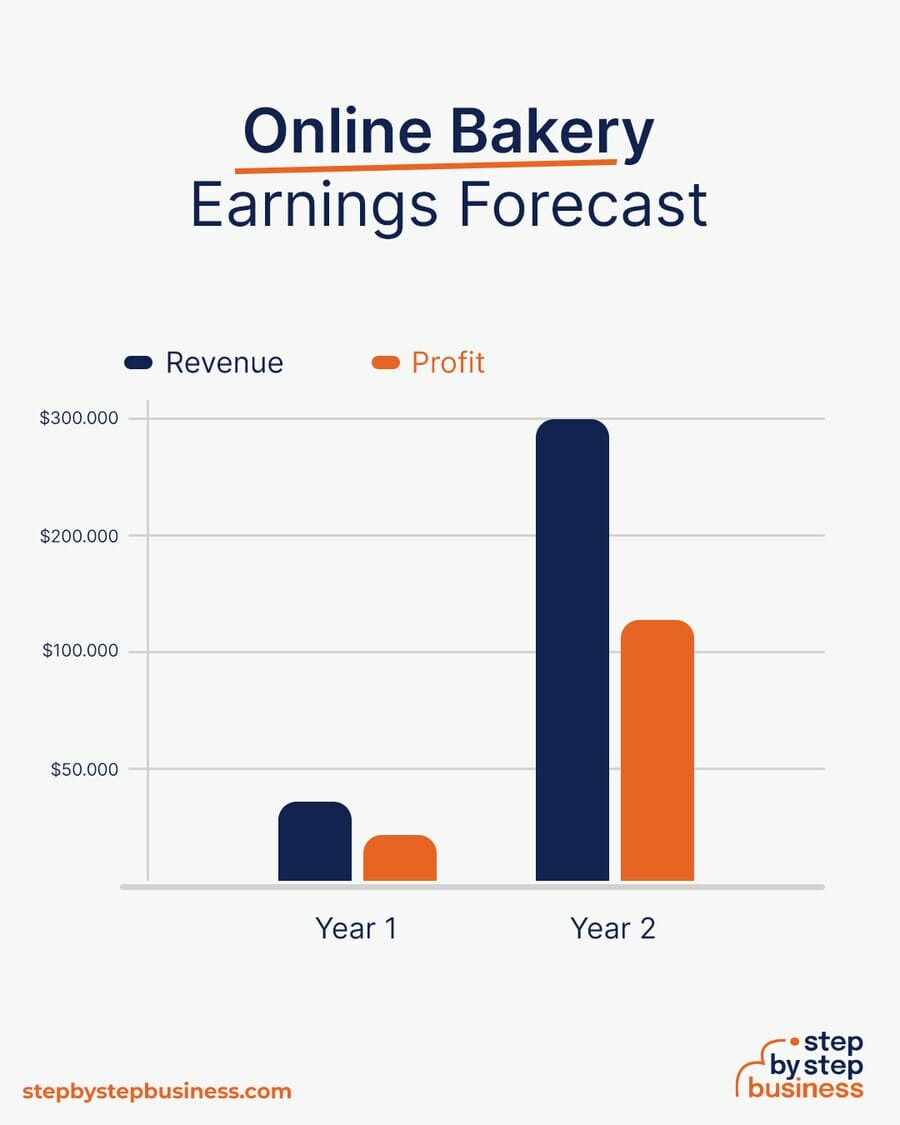
Your prices will depend on which products you sell. These calculations assume an average sale per customer of $30 and a profit margin, after ingredient and packaging costs, of 70%.
In your first year or two, you could work from home and sell 1000 items online in a year, bringing in $30,000 in revenue. This would mean $21,000 in profit, assuming that 70% margin.
As you gain traction, sales could climb to 10,000 items a year. At this stage, you’d have a commercial kitchen and hire staff, reducing your margin to around 40%. With annual revenue of $300,000, you’d make a tidy profit of $120,000.
There are a few barriers to entry for an online bakery. Your biggest challenges will be:

Now that you know what’s involved in starting an online bakery, it’s a good idea to hone your concept in preparation to enter a competitive market.
Market research could give you the upper hand even if you’ve got the perfect product. Conducting robust market research is crucial, as it will help you better understand your customers, your competitors, and the broader business landscape.
Research online bakeries in your area to examine their products, price points, and customer reviews.
This should identify areas where you can strengthen your business and gain a competitive edge to make better business decisions.
You’re looking for a market gap to fill. For instance, maybe the market is missing an online bakery that offers next day shipping, or that specializes in unique cheesecake flavors.
You might consider targeting a niche, such as pies or cookies by the dozen.
This could jumpstart your word-of-mouth marketing and attract clients right away.
When determining what to offer, you’ll probably want to choose the baked goods you do best. You might specialize in breads, pies, cakes, cookies, cheesecakes, or muffins. Alternatively, you could choose to offer a variety of items and custom-made goods.
Prices for baked goods vary based on the type. Check the prices of other online bakeries to make sure you’re competitive. Your prices should also be based on your ingredient and packaging costs.
Once you know your costs, use this Step By Step profit margin calculator to determine your mark-up and final price points. Remember, the prices you use at launch should be subject to change if warranted by the market.
The market for baked goods is broad, so you can spread out your marketing to include TikTok, Instagram, and Facebook. You could also target business people on LinkedIn who may want to give baked goods as gifts.
In the early stages, you may want to run your business from home to keep costs low. But as your business grows, you’ll likely need to hire workers for various roles and may need to rent out a commercial kitchen. You can find commercial space to rent in your area on sites such as Craigslist, Crexi, and Instant Offices.
When choosing a commercial space, you may want to follow these rules of thumb:

Your business name is your business identity, so choose one that encapsulates your objectives, services, and mission in just a few words. You probably want a name that’s short and easy to remember, since much of your business, and your initial business in particular, will come from word-of-mouth referrals.
Here are some ideas for brainstorming your business name:
Once you’ve got a list of potential names, visit the website of the US Patent and Trademark Office to make sure they are available for registration and check the availability of related domain names using our Domain Name Search tool. Using “.com” or “.org” sharply increases credibility, so it’s best to focus on these.
Finally, make your choice among the names that pass this screening and go ahead and reserve your business name with your state, start the trademark registration process, and complete your domain registration and social media account creation.
Your business name is one of the key differentiators that sets your business apart. Once you pick a name, reserve it and start with the branding, it’s hard to switch to a new name. So be sure to carefully consider your choice before moving forward.
Here are the key components of a business plan:
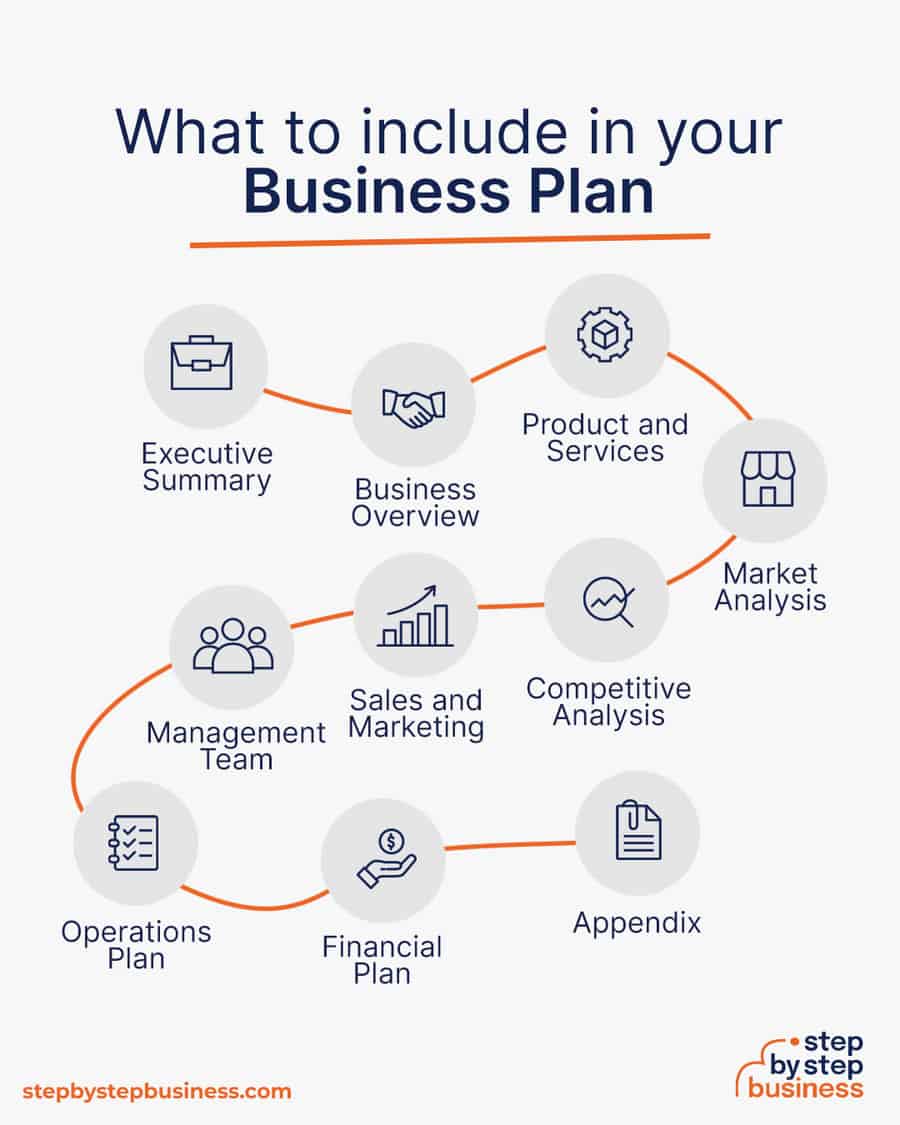
If you’ve never created a business plan, it can be an intimidating task. You might consider hiring a business plan specialist to create a top-notch business plan for you.
Registering your business is an absolutely crucial step — it’s the prerequisite to paying taxes, raising capital, opening a bank account, and other guideposts on the road to getting a business up and running.
Plus, registration is exciting because it makes the entire process official. Once it’s complete, you’ll have your own business!
Your business location is important because it can affect taxes, legal requirements, and revenue. Most people will register their business in the state where they live, but if you are planning to expand, you might consider looking elsewhere, as some states could offer real advantages when it comes to online bakeries.
If you’re willing to move, you could really maximize your business! Keep in mind, it’s relatively easy to transfer your business to another state.
Business entities come in several varieties, each with its pros and cons. The legal structure you choose for your online bakery will shape your taxes, personal liability, and business registration requirements, so choose wisely.
Here are the main options:

We recommend that new business owners choose LLC as it offers liability protection and pass-through taxation while being simpler to form than a corporation. You can form an LLC in as little as five minutes using an online LLC formation service. They will check that your business name is available before filing, submit your articles of organization, and answer any questions you might have.
Choose Your State
The final step before you’re able to pay taxes is getting an Employer Identification Number, or EIN. You can file for your EIN online or by mail or fax: visit the IRS website to learn more. Keep in mind, if you’ve chosen to be a sole proprietorship you can simply use your social security number as your EIN.
Once you have your EIN, you’ll need to choose your tax year. Financially speaking, your business will operate in a calendar year (January–December) or a fiscal year, a 12-month period that can start in any month. This will determine your tax cycle, while your business structure will determine which taxes you’ll pay.
The IRS website also offers a tax-payers checklist, and taxes can be filed online.
It is important to consult an accountant or other professional to help you with your taxes to ensure you are completing them correctly.
Securing financing is your next step and there are plenty of ways to raise capital:

Bank and SBA loans are probably the best option, other than friends and family, for funding an online bakery business. You might also try crowdfunding if you have an innovative concept.

Starting an online bakery business requires obtaining a number of licenses and permits from local, state, and federal governments.
Federal regulations, licenses, and permits associated with starting your business include doing business as (DBA), health licenses and permits from the Occupational Safety and Health Administration (OSHA), trademarks, copyrights, patents, and other intellectual properties, as well as industry-specific licenses and permits.
You may also need state-level and local county or city-based licenses and permits. Many states and localities have specific requirements for a bakery business run from a home. The license requirements and how to obtain them vary, so check the websites of your state, city, and county governments or contact the appropriate person to learn more.
You could also check this SBA guide for your state’s requirements, but we recommend using MyCorporation’s Business License Compliance Package. They will research the exact forms you need for your business and state and provide them to ensure you’re fully compliant.
This is not a step to be taken lightly, as failing to comply with legal requirements can result in hefty penalties.
If you feel overwhelmed by this step or don’t know how to begin, it might be a good idea to hire a professional to help you check all the legal boxes.
Before you start making money, you’ll need a place to keep it, and that requires opening a bank account.
Keeping your business finances separate from your personal account makes it easy to file taxes and track your company’s income, so it’s worth doing even if you’re running your online bakery business as a sole proprietorship. Opening a business bank account is quite simple, and similar to opening a personal one. Most major banks offer accounts tailored for businesses — just inquire at your preferred bank to learn about their rates and features.
Banks vary in terms of offerings, so it’s a good idea to examine your options and select the best plan for you. Once you choose your bank, bring in your EIN (or Social Security Number if you decide on a sole proprietorship), articles of incorporation, and other legal documents and open your new account.
Business insurance is an area that often gets overlooked, yet it can be vital to your success as an entrepreneur. Insurance protects you from unexpected events that can have a devastating impact on your business.
Here are some types of insurance to consider:


As opening day nears, prepare for launch by reviewing and improving some key elements of your business.
Being an entrepreneur often means wearing many hats, from marketing to sales to accounting, which can be overwhelming. Fortunately, many websites and digital tools are available to help simplify many business tasks.
You may want to use industry-specific software, such as Toast, eHopper, or Lavu, to manage your menu, inventory, orders, and customer loyalty program.
Website development is crucial because your site is your online presence and needs to convince prospective clients of your expertise and professionalism. You can create your own website using services like WordPress, Wix, or Squarespace. This route is very affordable, but figuring out how to build a website can be time-consuming. If you lack tech-savvy, you can hire a web designer or developer to create a custom website for your business.
Your customers are unlikely to find your website, however, unless you follow Search Engine Optimization (SEO) practices. SEO will help your website appear closer to the top in relevant search results, a crucial element for increasing sales.
Make sure that you optimize calls to action on your website. Experiment with text, color, size, and position of calls to action such as “Buy Now” or “Order”. This can sharply increase purchases.
Here are some powerful marketing strategies for your future business:
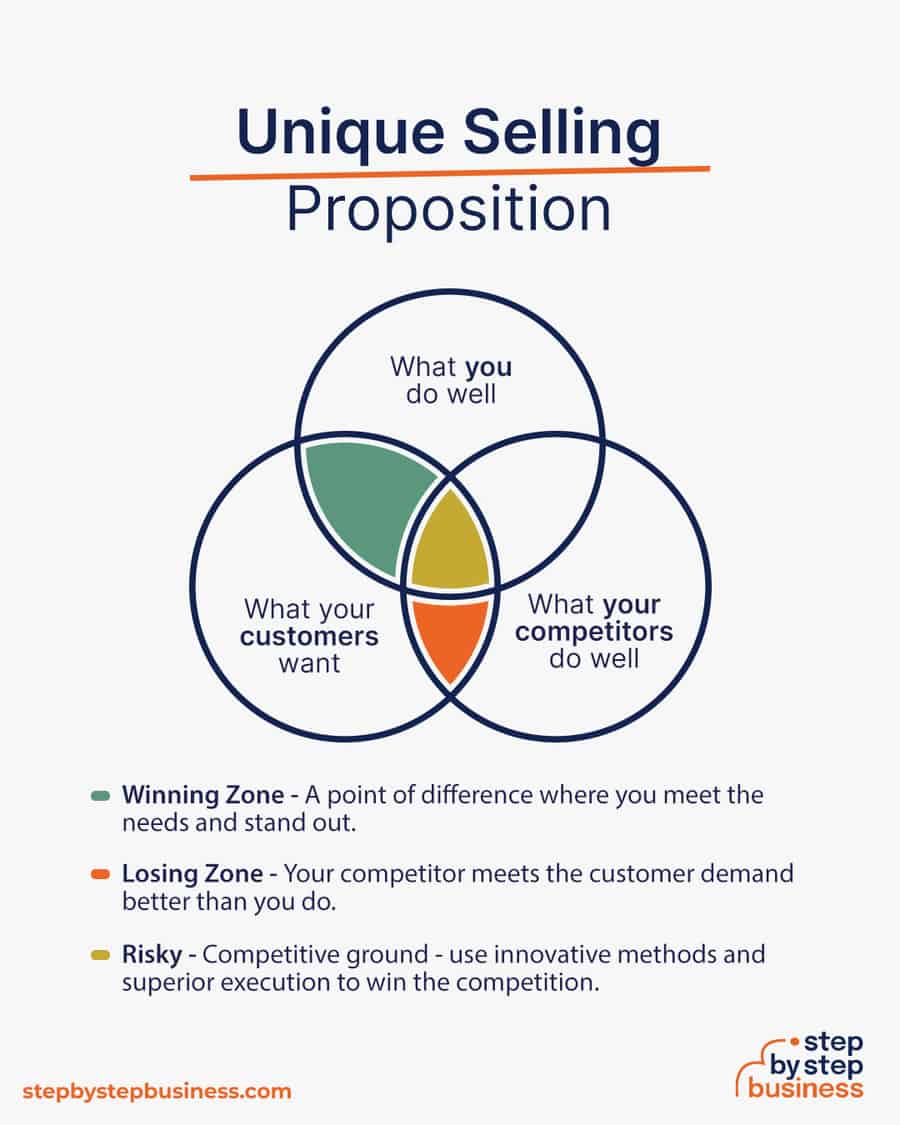
Unique selling propositions, or USPs, are the characteristics of a product or service that sets it apart from the competition. Customers today are inundated with buying options, so you’ll have a real advantage if they are able to quickly grasp how your online bakery meets their needs or wishes. It’s wise to do all you can to ensure your USPs stand out on your website and in your marketing and promotional materials, stimulating buyer desire.
Global pizza chain Domino’s is renowned for its USP: “Hot pizza in 30 minutes or less, guaranteed.” Signature USPs for your online bakery business could be:
You may not like to network or use personal connections for business gain. But your personal and professional networks likely offer considerable untapped business potential. Maybe that Facebook friend you met in college is now running an online bakery business, or a LinkedIn contact of yours is connected to dozens of potential clients. Maybe your cousin or neighbor has been working in online bakeries for years and can offer invaluable insight and industry connections.
The possibilities are endless, so it’s a good idea to review your personal and professional networks and reach out to those with possible links to or interest in online bakeries. You’ll probably generate new customers or find companies with which you could establish a partnership. Online businesses might also consider affiliate marketing as a way to build relationships with potential partners and boost business.

If you’re starting out small from a home office, you may not need any employees. But as your business grows, you will likely need workers to fill various roles. Potential positions for an online bakery business include:
At some point, you may need to hire all of these positions or simply a few, depending on the size and needs of your business. You might also hire multiple workers for a single role or a single worker for multiple roles, again depending on need.
Free-of-charge methods to recruit employees include posting ads on popular platforms such as LinkedIn, Facebook, or Jobs.com. You might also consider a premium recruitment option, such as advertising on Indeed, Glassdoor, or ZipRecruiter. Further, if you have the resources, you could consider hiring a recruitment agency to help you find talent.

How great would it be to share your baking passion with the entire country?! An online bakery is the perfect opportunity, and hopefully the first step to becoming the next Pepperidge Farms or Harry and David.
You’ve done your business homework, so it’s time to hit the kitchen and start baking up some big-time success.
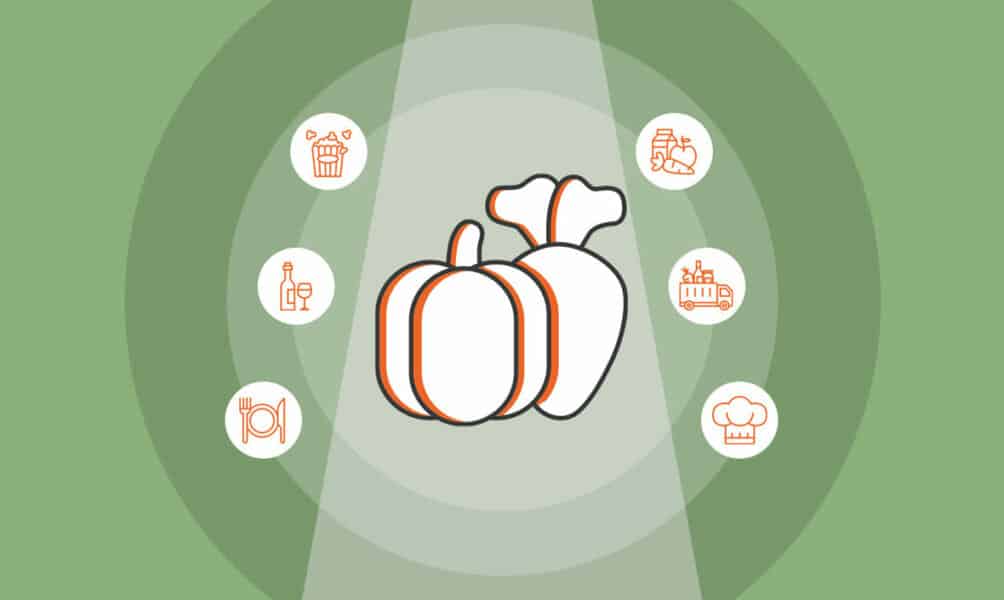
Published on August 11, 2022
If you’re a vegan looking for a business idea that aligns with your diet, you’ve got more options than you might think. You could start abakery, ...
Read Now
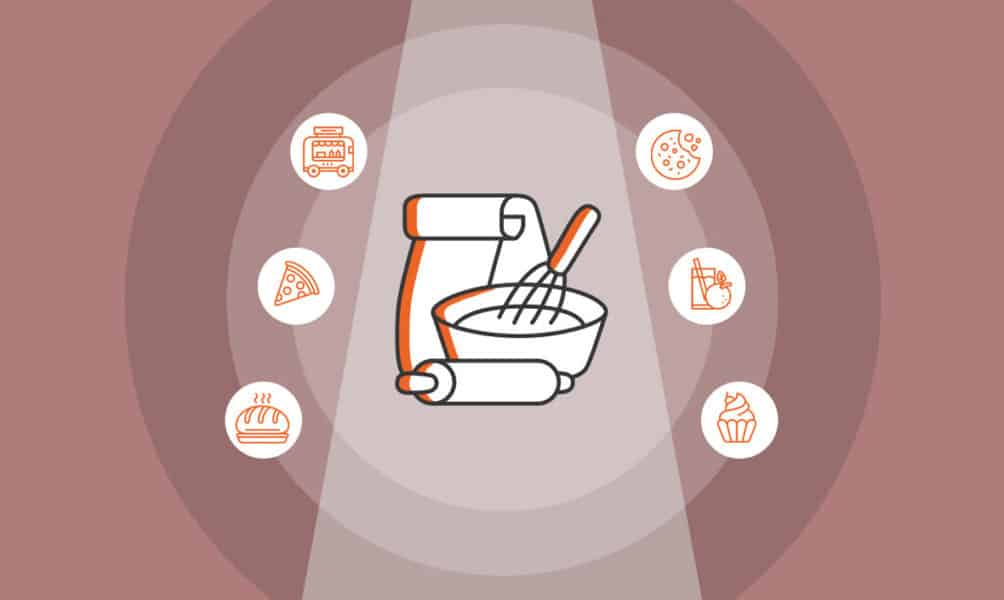
Published on July 14, 2022
The US baking industry is expected to continue growing as the economy improves and consumer spending increases. According to the American BakersAsso ...
Read Now

Published on June 30, 2022
People are always eating and drinking, so starting a food business is always a potentially wise career choice. But to succeed you’ll need astr ...
Read Now
No thanks, I don't want to stay up to date on industry trends and news.
Comments